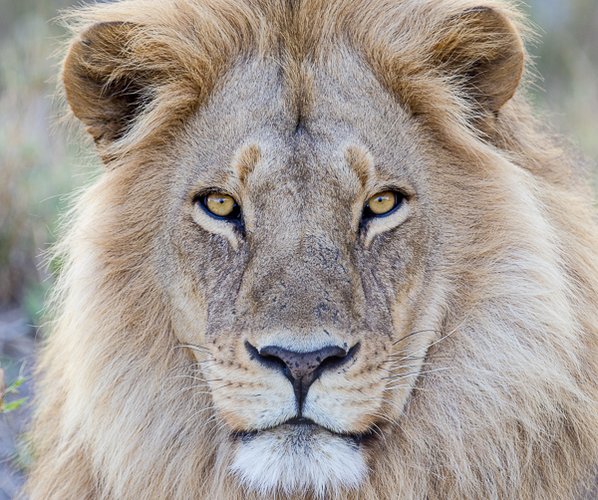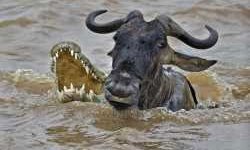Nile crocodile
Crocodylus niloticus
Behavior and diet
The Nile crocodile is found throughout sub-Sahara Africa, parts of the Nile River and in the freshwater rivers and brackish waters of Madagascar. At one point, in the 1950’s, it was hunted to near extinction, but has since made a comeback. Currently, 14 species of crocodile are present, with the saltwater crocodile being the largest and most aggressive of all species. The Nile crocodile is one of the next-largest species and is notorious for its aggressive personality. An inactive crocodile can hold its breath for up to two hours, although most rest above water. The Nile crocodile is a carnivore that can eat up to half its body weight in one feeding. While the young hatchlings may feed on insects and small bugs, adult crocodiles have been known to eat nearly anything that strays too close, such as wildebeest, antelope, zebra and even lions. The young of any animal, large or small, is fair game at the watering hole and larger crocodiles have been known to even get adult giraffes and buffalo. Roughly two months after mating, the female Nile crocodile will lay around 20-80 eggs, which hatch in about 70-100 days. The sex of all the eggs is determined by the ambient temperature. Males are only produced within the 31.7-34.5 C (89 - 94 F) range. If the temperature is lower or higher, the offspring will be female.

 Botswana
Botswana
 DR Congo
DR Congo
 Gabon
Gabon
 Kenya
Kenya
 Madagascar
Madagascar
 Malawi
Malawi
 Mozambique
Mozambique
 Namibia
Namibia
 Rwanda
Rwanda
 South Africa
South Africa
 Tanzania
Tanzania
 Uganda
Uganda
 Zambia
Zambia
 Zimbabwe
Zimbabwe


